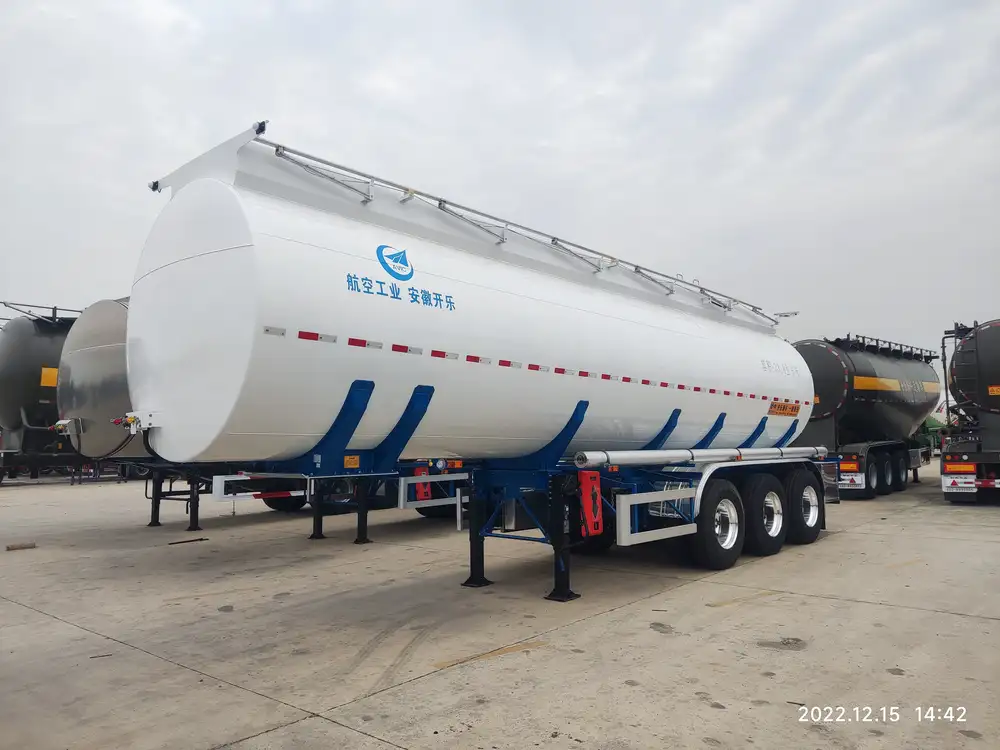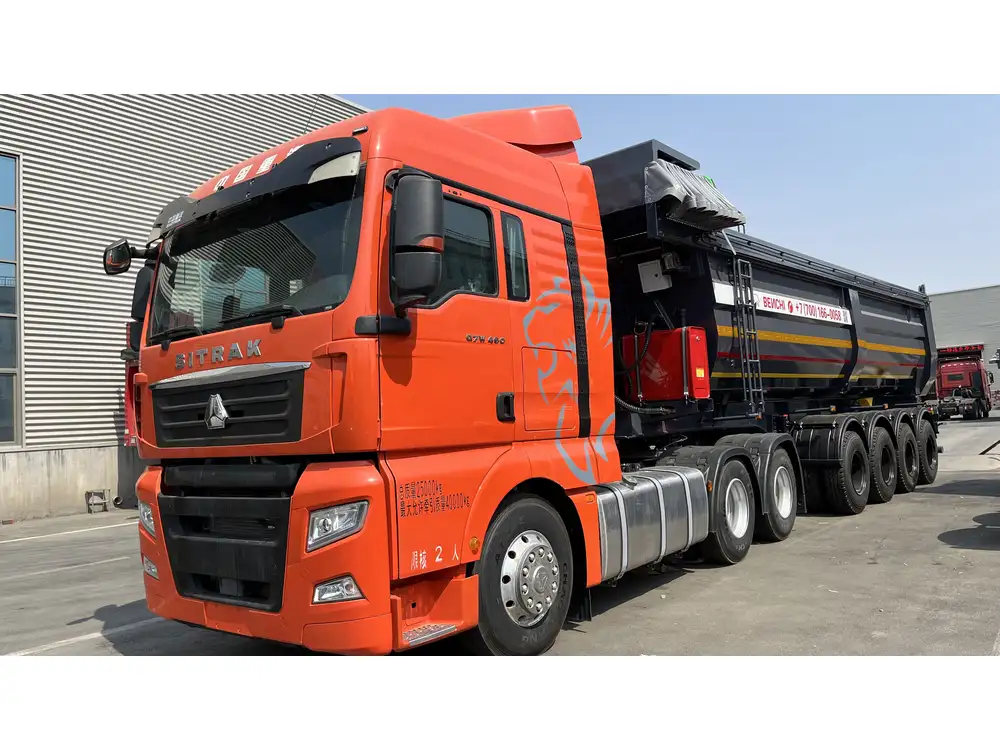When delving into the world of heavy-duty vehicles, we often encounter a common question: Can a semi-trailer be called a truck? This inquiry taps into the intricate lexicon of the trucking industry, and it is essential to delineate these terms clearly to avoid confusion. In this comprehensive analysis, we will explore the definitions, components, functionalities, and classifications of semi-trailers and trucks, paving the way for a clearer understanding of their respective roles in transportation.
Defining the Basics of Trucks and Semi-Trailers
Truck: What Is It?
In the broadest sense, a truck refers to a motor vehicle designed primarily for transporting cargo. However, the term encompasses a variety of configurations. Generally, the classification can be broken down into several categories:
- Light-duty trucks: Vehicles weighing up to 6,000 pounds. Examples include pickups and vans.
- Medium-duty trucks: Weighing between 6,001 to 26,000 pounds, these trucks are often utilized for local deliveries.
- Heavy-duty trucks: With a Gross Vehicle Weight Rating (GVWR) exceeding 26,000 pounds, these trucks are engineered for long-haul freight.
Table 1: Categories of Trucks
| Truck Category | Weight Range (GVWR) | Common Uses |
|---|---|---|
| Light-Duty | Up to 6,000 lbs | Personal & local use |
| Medium-Duty | 6,001 – 26,000 lbs | Delivery & regional freight |
| Heavy-Duty | Above 26,000 lbs | Long-haul transportation |

Semi-Trailer: What Is It?
A semi-trailer, in contrast, is defined as an asset without a front axle that is normally towed by a truck (also known as a tractor). It typically consists of the following components:
- Chassis: The main structure supporting the trailer.
- Axles: Support the weight of the load and enable movement.
- Floor and Walls: Carry the cargo, which can vary by industry needs, ranging from flatbeds to enclosed spaces.
Understanding the Truck-Truck Trailer Dynamic
To clarify, a semi-truck is the combination of a truck (or tractor) and a semi-trailer. While the truck’s primary role is to provide the necessary power and maneuverability, the semi-trailer serves as the cargo carrier. The relationship hinges on the unique design of the semi-trailer, which pivots at a connection point, generally referred to as the fifth wheel.
Diagram: Components of a Semi-Trailer Setup
[Truck/Tractor] -- [Fifth Wheel Connection]
[Semi-Trailer]
(Cargo Space)The role of a semi-trailer in freight transportation

Versatility and Design
Semi-trailers are renowned for their versatile design, which accommodates various industries and cargo types. Manufacturers tailor semi-trailers to meet specific needs, evident in the wide-ranging options available:
- Container Trailers: Designed to carry standardized shipping containers.
- Flatbed Trailers: Typically used for oversized or hard-to-load items like construction equipment.
- Refrigerated Trailers (Reefers): Ensure temperature-sensitive goods remain fresh.
Each of these trailer types highlights the semi-trailer’s indispensable role in the logistics chain. Notably, the semi-trailer system allows for the efficient transfer of goods across vast distances, combining flexibility with functionality.
Efficiency in Operations
Using a semi-trailer in freight transport not only enhances operational efficiency but also reduces costs. The ability to swap out semi-trailers quickly allows for:
- Reduced downtime: A single truck can quickly switch to different trailers, maximizing productivity.
- Cross-docking capabilities: Trailers can be unloaded and reloaded efficiently at distribution centers, speeding up shipping times.
The Terminology and Misconceptions

Common Misunderstandings
Despite the explicit definitions, a pervasive misunderstanding persists among the general public concerning the term “truck.” Many individuals may colloquially refer to a semi-trailer as a truck due to the nature of their function in transportation. However, it is critical to reinforce that:
- The truck (tractor) is the engine-powered component responsible for movement.
- The semi-trailer is the non-powered cargo container designed to hitch to the truck.
Table 2: Key Differences Between Truck and Semi-Trailer
| Aspect | Truck | Semi-Trailer |
|---|---|---|
| Definition | Self-propelled vehicle | Towable cargo container |
| Power Source | Contains engine | No engine; relies on truck |
| Role | Transportation of cargo | Carrying various types of cargo |
| Mobility | Can operate independently | Dependent on truck for movement |
Industry Terminology
Understanding the lingo used in the trucking industry is crucial for clarity. Below are several common terms that often surface when discussing these vehicles:
- Tractor: The front part of a semi-truck—the engine and cab.
- Fifth Wheel: The coupling device allowing the semi-trailer to attach to the tractor.
- Bobtailing: A term that describes when a tractor operates without a trailer attached.
The Regulatory Landscape

Licensing and Compliance
Understanding the distinctions between trucks and semi-trailers is also critical from a legal and regulatory standpoint. The licensing requirements for operating these vehicles vary significantly based on their classifications:
- Commercial Driver’s License (CDL): Required for operating heavy-duty trucks and combinations.
- Vehicle Inspection and Maintenance Regulations: Both trucks and semi-trailers must adhere to local and federal regulations regarding maintenance and inspection to ensure the safety and efficiency of the vehicle.
Weight Limits and Regulations
The Federal Highway Administration (FHWA) imposes strict regulations on weight limits for trucks and trailers traveling on public roads:
- Maximum Weight: A typical semi-truck and trailer combination has a maximum allowable weight of 80,000 pounds.
- Axle Limits: These regulations also dictate specific weight distributions across axles to prevent road damage and ensure safety.
Table 3: Typical Regulations for Heavy Vehicles
| Regulation | Description |
|---|---|
| Total Weight Limit | Up to 80,000 pounds on Interstate highways |
| Single Axle Limit | Maximum 20,000 pounds for a single axle |
| Tandem Axle Limit | Maximum 34,000 pounds for tandem axles (2 axles together) |
The Evolution of Semi-Trailer Technology

Technological Advancements
The trucking industry is undergoing a paradigm shift with the integration of advanced technologies, leading to safer and more efficient operations. Key advancements include:
- Telematics: Enabling fleet managers to track vehicle performance and optimize routes.
- Aerodynamics: Innovations in trailer design, reducing drag and improving fuel efficiency.
- Electric and Hybrid Trailers: Transitioning towards more eco-friendly options in response to regulatory pressures.
Impact on the Future of Transportation
The evolution of this industry, driven by technology, poses interesting outcomes for the connection between semi-trailers and trucks. Improved technologies promise to increase the viability of various trailer types, expand flexibility, and reduce environmental impact.
Conclusion: Clarifying the Distinction
In conclusion, while a semi-trailer is often colloquially referred to as a truck, recognizing the distinction between the two is essential for both operational efficiency and regulatory compliance. A semi-trailer, while integral to the trucking ecosystem, is fundamentally a cargo transport unit that operates in tandem with a truck (tractor).
By understanding these roles more clearly, users can make informed decisions when it comes to logistics, vehicle selection, and compliance. Whether seeking to optimize a fleet or to simply grasp the language of transportation, recognizing the differences between trucks and semi-trailers is paramount in navigating the complexities of modern freight transport effectively.



